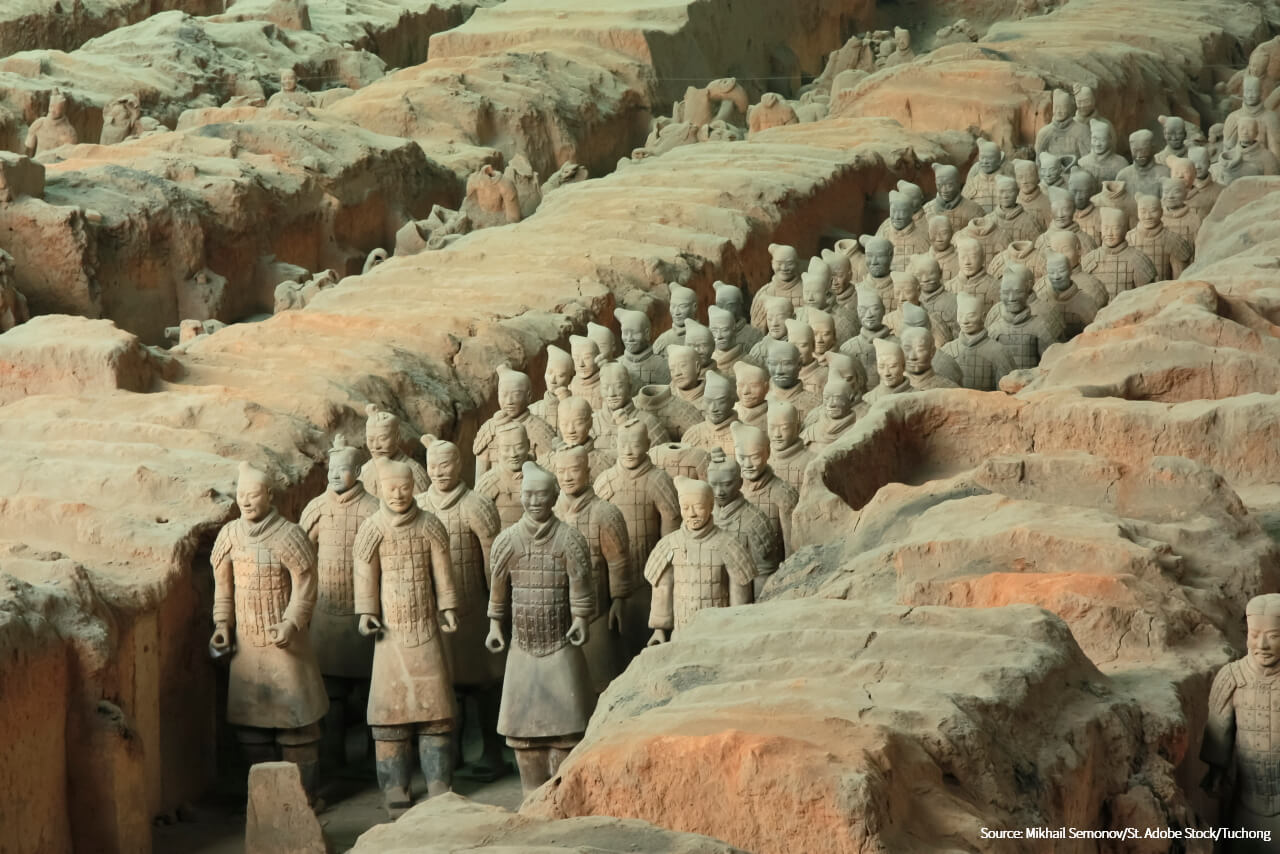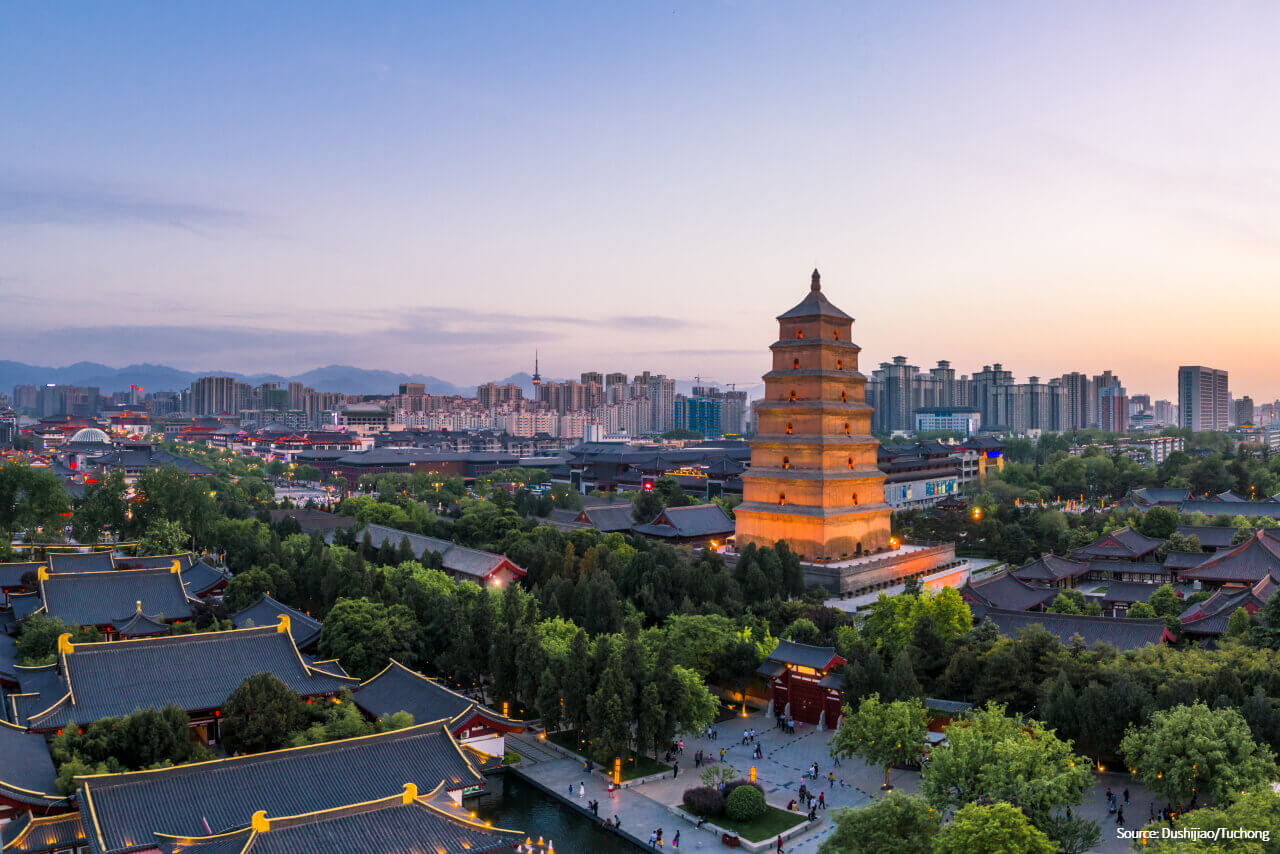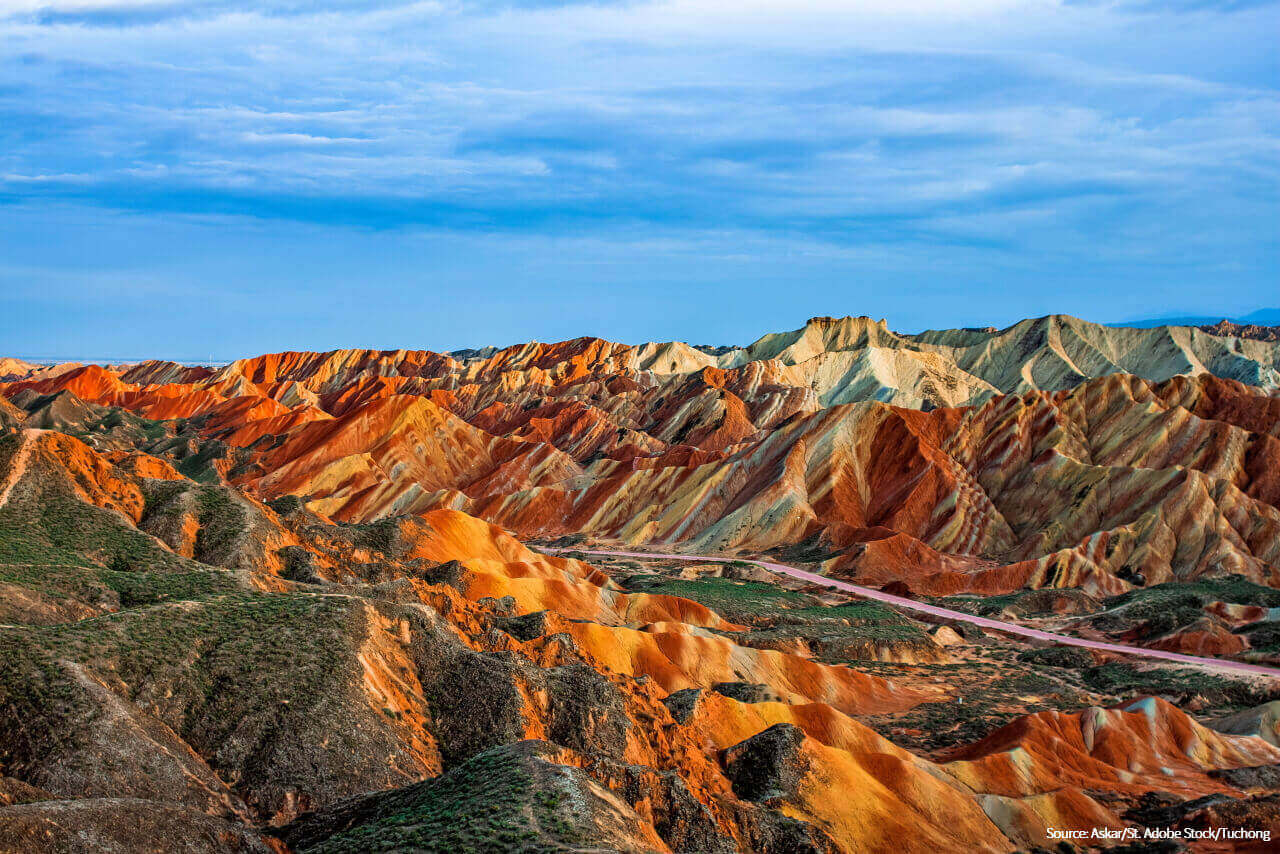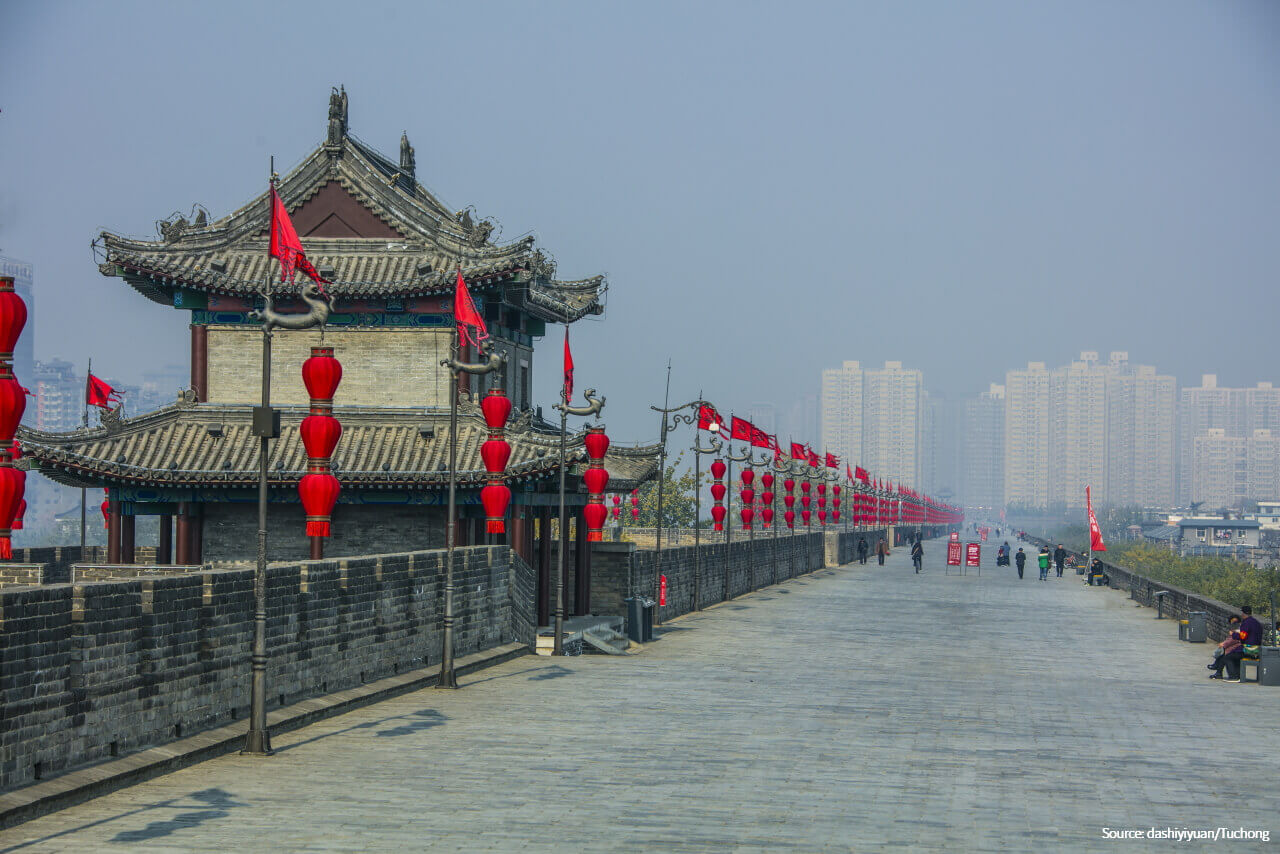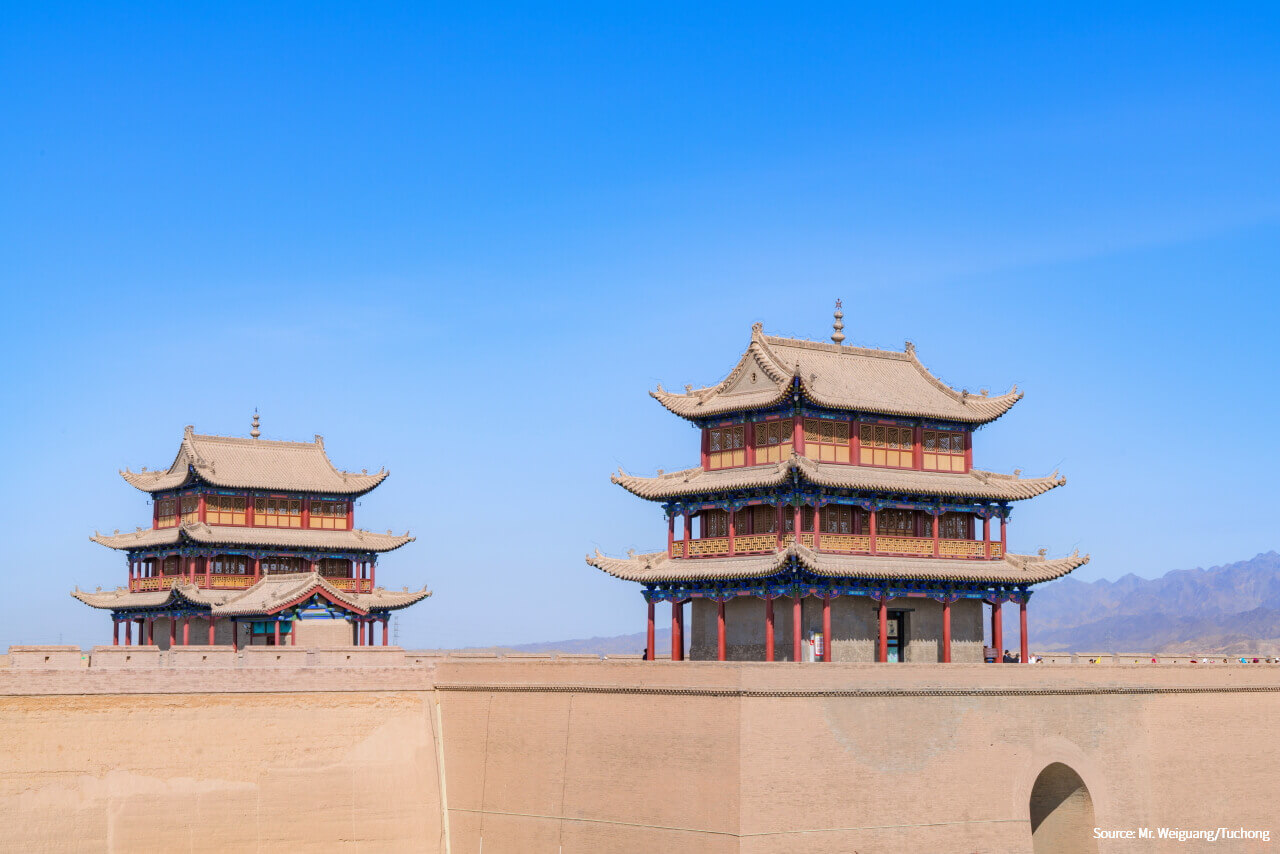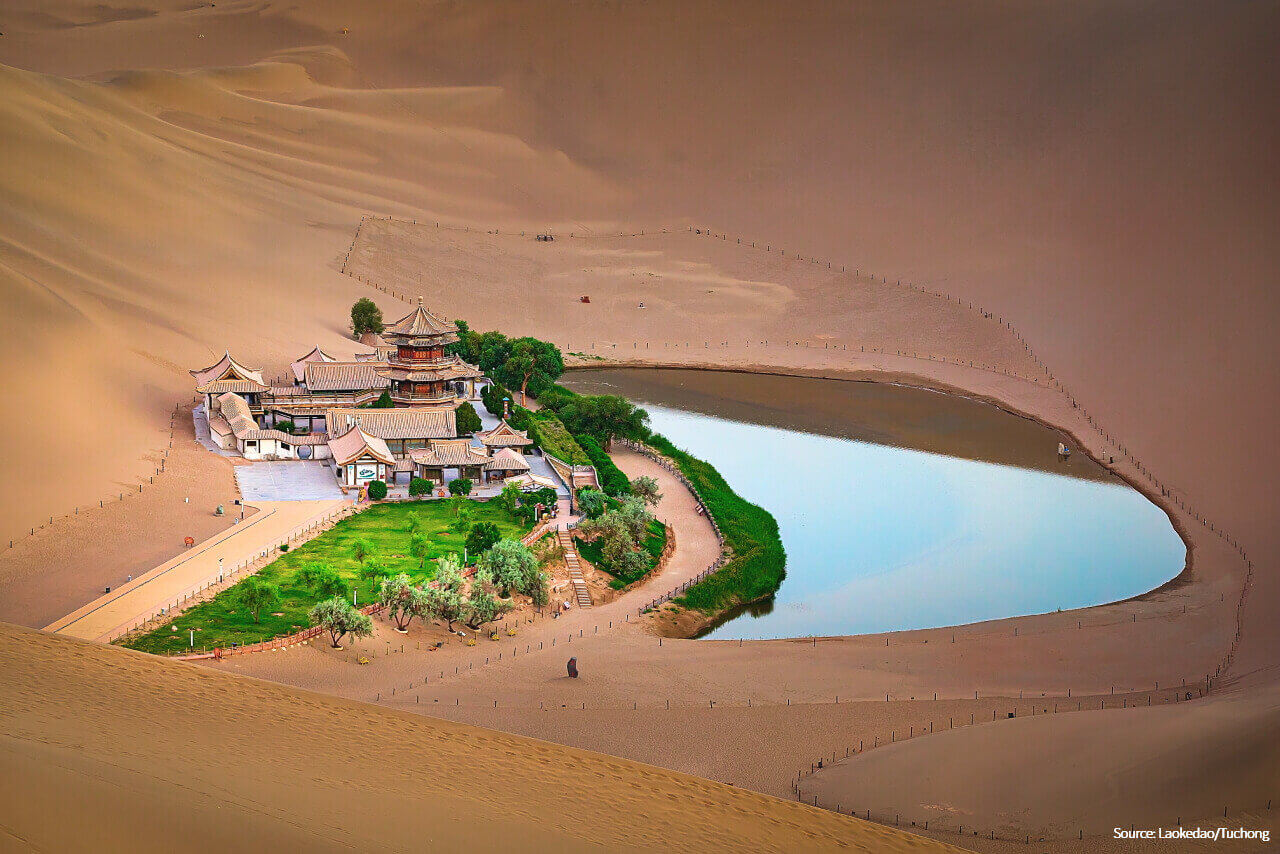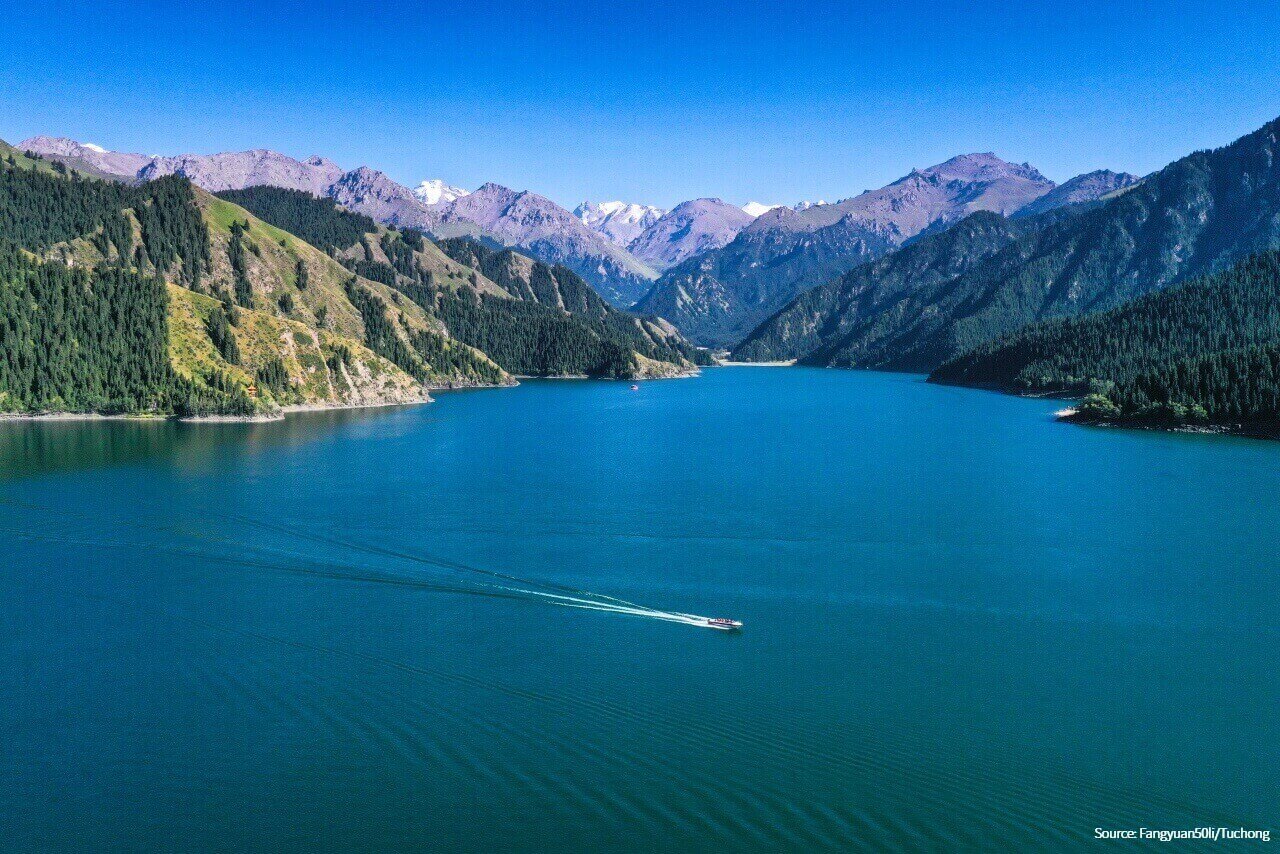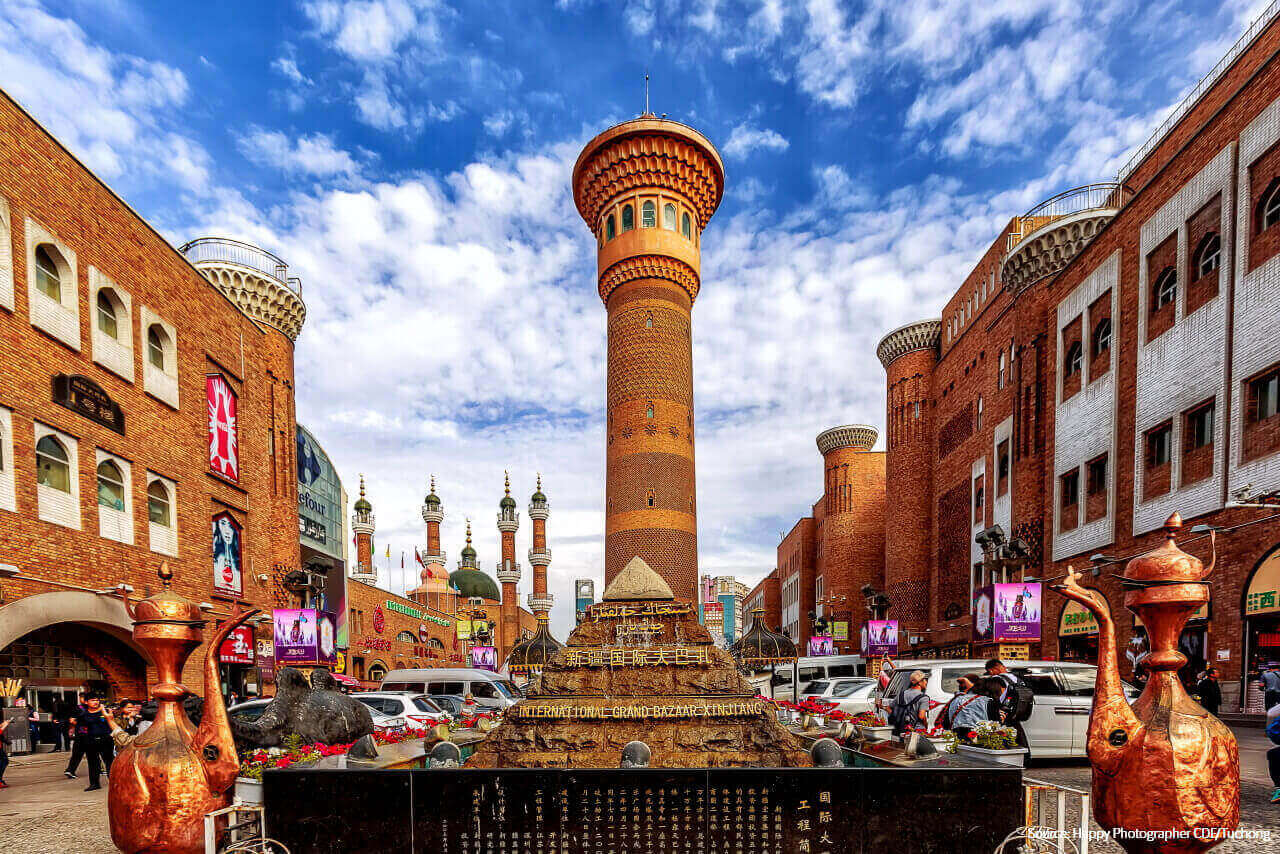After breakfast, your will ride a private car or coach to visit the Terracotta Warriors. During your tour at the site, you may also get a rare opportunity to make a miniature terracotta warrior with your own hands under instructions given by local potters. In the afternoon, you will return to downtown Xi’an and visit some sightseeing spots in the city, including the Giant Wild Goose Pagoda and the Ancient City Wall. An optional activity recommended to you is to watch a wonderful Tang-Palace dance show after dinner.
The site of the Terracotta Warriors is located 40 kilometers(25 miles) to the east of downtown Xi’an. There are over 8,000 life-size statues in three vaults. The warriors, horses and chariots are lined up and divided into cavalry and infantry units. All the statues were made and buried over 2,000 years ago. In March, 1974, some peasant farmers discovered several statues of warriors, when they were digging a well nearby the site. They reported the discovery to the government. Then, some archaeologists came and unearthed the vaults. The statues served as the funerary items for Emperor Qin-Shihuang, the first emperor in Chinese history. As one of the top three attractions in Mainland China, the assemblage of Terracotta Warriors and Horses has been billed as the Eighth Wonder of the World and added to the list of world cultural heritage sites by UNESCO in 1987.
The Giant Wild Goose Pagoda is situated at Cien Monastery. It was built by Master Xuanzang in the year of 652. The master traveled to India and brought Buddha’s holy books and statues back to China. The pagoda used to be the place where all of the statues and books were preserved. It is a seven-storied pagoda, is 64.5 meters(211.6 feet) in height.
In Xi’an, the Ancient City Wall is one of the main magnets for visitors. It is one of the few well-preserved defensive constructions which have survived in the world. The wall was initially built in the Tang Dynasty(618-907) and reconstructed in the Ming Dynasty(1368-1644). It is 12 meters high(39 feet) and 13.74 kilometers(8.5 miles) long.
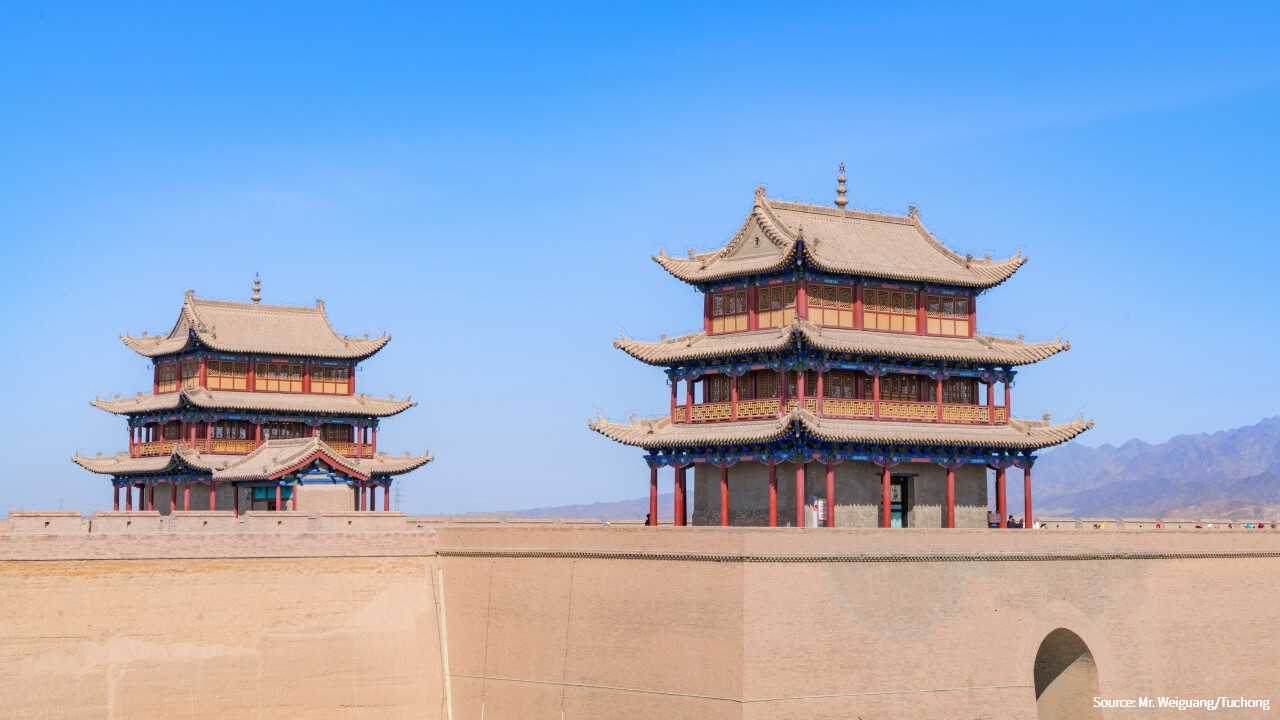 The silk road is steeped in history and legend. It has witnessed many great evens for two millenniums, such as the trade and cultural exchanges between western countries and China, and the rise and decline of civilizations along the ancient trade route. All of those have become stories from the dim and distant past. However, tourists can still trace the legend of the silk road though the remains. They are also enchanted by the dramatic landscape along the route.
The silk road is steeped in history and legend. It has witnessed many great evens for two millenniums, such as the trade and cultural exchanges between western countries and China, and the rise and decline of civilizations along the ancient trade route. All of those have become stories from the dim and distant past. However, tourists can still trace the legend of the silk road though the remains. They are also enchanted by the dramatic landscape along the route.